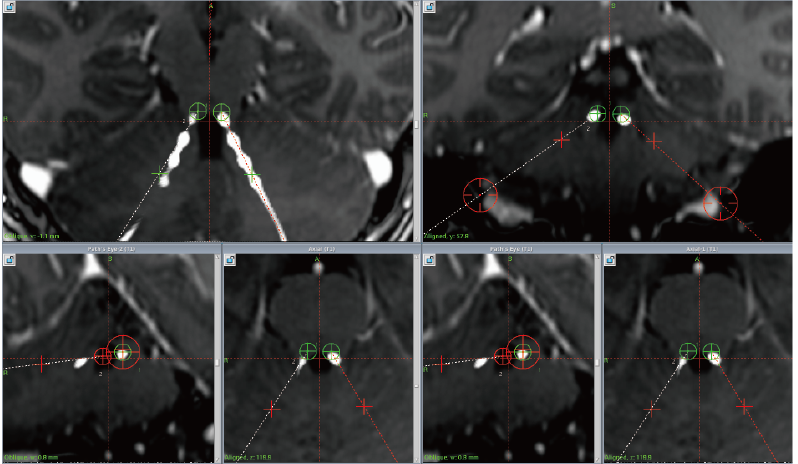Category: Dystonia: Clinical Trials and Therapy
Objective: To evaluate whether cerebellum deep brain stimulation (DBS) is effective in patient with secondary dystonia and to compare which target in cerebellum is more suitable for this patient.
Background: Globus pallidus internus (GPi) DBS is widely used in patients with isolated dystonia. However, it remains controversial on patients with secondary dystonia including cerebral palsy. Studies have implied that the purer the dystonia and the milder the spasticity, the more likely the patient was to benefit from GPi DBS (1). Cerebellar stimulation can affect the pathological abnormalities of movement disorders through several connections between the cerebellum and motor cortex as well as sub-cortical structures. chronic cerebellum stimulation has been attempted over years and most of them showed benefits in patients of cerebral palsy with dystonia and spasticity.
Method: We performed bilateral cerebellum DBS with the electrodes reach both superior cerebellar peduncles (SCPs) and dentate nuclei (DNs) in a patient of cerebral palsy with severe dystonia and spasticity, who failed GPi DBS 2 years ago. We used the Burke-Fahn-Marsden Dystonia Rating Scale for rating dystonia; the Modified Ashworth Scale for muscle tone, the visual analog scale for pain, 36-Item Short Form Health Survey for quality of life, and voice spectrum analysis for rating sound.
Results: 2-days after surgery, we conducted external stimulation for each contact (contacts 1 and 2 were close to the SCP, and contacts 3 and 4 were close to the DN). After stimulating contact 1 and 2 with a voltage of 3V, we observed sudden increases in muscle tonus on the ipsilateral extremity of the stimulating side, accompanied by immediate relaxation. For contact 3, a much higher voltage 10V was needed to reach such outcome. For contact 4, little reaction was observed with the regulation of voltage. Thus, contact 1 and 2 were used for the future programming. Remarkable improvements in stiffness of upper extremities were observed 3 months after DBS. The patient has never stood up since her birth because of spasticity of trunk and lower limbs. Just 6 months after DBS, she gained the ability to stand. Also, her sound became much clearer at 6-month follow-up. Moreover, the results of the SF-36 scale showed that the quality of her life had been greatly improved at 3- and 6-month follow ups.
Conclusion: SCP DBS may be a potential treatment for patient of cerebral palsy with dystonia and spasticity.
References: (1). Vidailhet, M., et al., Bilateral pallidal deep brain stimulation for the treatment of patients with dystonia-choreoathetosis cerebral palsy: a prospective pilot study. Lancet Neurol, 2009. 8(8): p. 709-17.
To cite this abstract in AMA style:
S.Z Lin, H.X Li, CC. Zhang, Y.H Wang, Y.W Wu, D.Y Li. Cerebellar deep brain stimulation for secondary dystonia: A Case Report [abstract]. Mov Disord. 2020; 35 (suppl 1). https://www.mdsabstracts.org/abstract/cerebellar-deep-brain-stimulation-for-secondary-dystonia-a-case-report/. Accessed January 1, 2026.« Back to MDS Virtual Congress 2020
MDS Abstracts - https://www.mdsabstracts.org/abstract/cerebellar-deep-brain-stimulation-for-secondary-dystonia-a-case-report/

